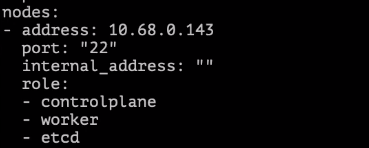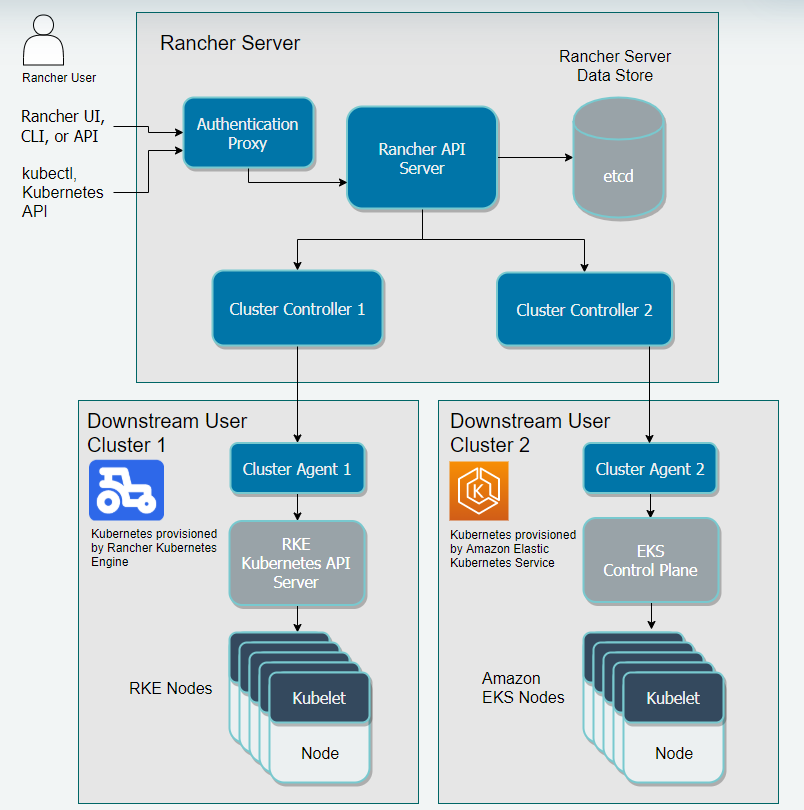Overview
RKE is just a kubernetes distribution on top of which you would install the Rancher server.
Rancher is a distributed microservices based application, that runs itself as a Kubernetes app while making it easy to run Kubernetes everywhere. It uses Kubernetes components internally such as **Controllers, CRDs, etcd **etc… It has two Kubernetes distributions — **RKE (Rancher Kubernetes Engine) **and K3s. RKE runs upstream Kubernetes entirely in Docker containers. For using Rancher , you either install one of its kubernetes distributions, create a cluster from this distribution and then install Rancher server on top of it (recommended usage) or install Rancher server on a standalone node as a docker container (demo / evaluation / lab purposes).
It’s important to not get confused between RKE and Rancher server. RKE is just a kubernetes distribution on top of which you would install the Rancher server. Rancher server is made up of the** API Server**, an Authentication proxy, and one cluster controller for each cluster that it manages. Rancher server uses **etcd **for its datastore.
RKE cluster can be created easily by installing the binary, creating a cluster config which contains node addresses and other configuration as shown below and then using this config to create the cluster using **rke up --config <config file>**.

Important to note here are the roles: etcd (Kubernetes internal database), controlplane (Kubernetes api-server, Scheduler and Controller Manager) and worker. Make a note of these roles as they are used while creating all clusters.
Once the RKE cluster is up, one can easily install Rancher server in the cluster using **helm charts **after some initial configuration.
#cloud-native #rke #k8s #rancher #kubernetes #cloud
